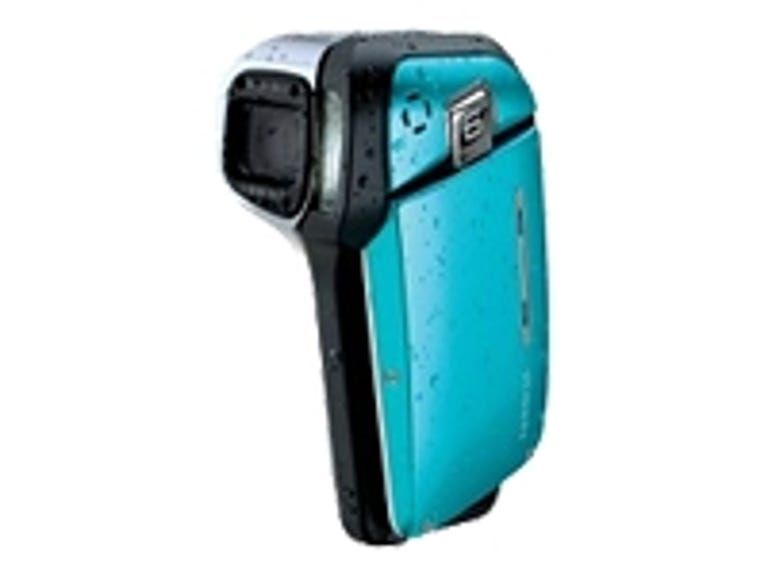The Good
The Bad
The Bottom Line
And in that respect, though we're not exactly swimming in waterproof cameras, the Sanyo Xacti VPC-E1 has some strong competition, notably the Olympus Stylus 770SW and the Pentax Optio W30. Though the E1 incorporates a 5x zoom lens, the other models cost less, have otherwise similar or better specs and can produce better underwater credentials: you can submerge the W30 to as deep as 10 feet for 2 hours and the 770SW to around 32 feet for as long as an hour. Those make the E1's mere 5 feet of depth for an hour pale in comparison. (All are JIS Class 8 qualified, but that just means they've been certified to be submerged for a manufacturer-specified duration at a manufacturer-specified depth.)
So right out of the gate, the E1 faces both an identity crisis and the challenge of distinguishing itself from better-equipped veterans. Unfortunately, it's not really up to the task. On one hand, the vertical design makes for a solid single-handed grip; your right hand wraps around the body with your index finger perched above the lens. But the shutter and record buttons are mushy with too little tactile feedback, so it's difficult to tell if you've successfully grabbed the shot or begun recording. Unless you have very tiny thumbs, it's nearly impossible to use the zoom switch or the user-programmable left and right arrow switches without impinging upon the Set button in the middle. That makes executing a consistent-speed zoom nearly impossible. And it all becomes a bit more difficult and awkward under water, especially if your hands get cold.
Physical navigation aside, the menus are easy to read and logically arranged, exposing you to the relatively basic, camcorderlike feature set. The E1 incorporates a slowish f/3.5-to-4.7, 38mm-to-190mm-equivalent lens with a built-in neutral-density filter and a 2.5-inch LCD that gets difficult to see in harsh light and that must be viewed head-on underwater. Though it lacks aperture- and shutter-priority exposure modes, you can select from among spot-, center- and pattern metering; sensitivity settings from ISO 50 to ISO 1,600 (as high as 7,200 in the Lamp low-light scene mode); auto, manual and four preset white-balance settings; spot or nine-point autofocus; and exposure compensation. At best quality--and you don't really want to drop below that--it records MPEG-4 video at about 409K per second or 24MB per minute of video.
The super macro mode can focus as close as 0.4 inch, the Normal focus mode can only lock beyond 31.5 inches, while a Total mode focuses as close as 4 inches; theoretically, by limiting the range of focus distances in Normal mode the camera can lock focus faster. Nonetheless, the E1 generally focuses pretty slowly--even more so in low light. Plus, with underwater reflections it takes even longer. The manual focus locks at stepped intervals, which means you eventually end up focusing with your feet. These focus issues, combined with the iffy shutter button, results in perceptible lag when photographing.
On top of performance issues, the E1 gets mixed marks for video and still quality as well. On one hand, it can take some very nice photos. But more often, the photos suffer from the camera shake caused by frantic presses, followed by jabs, at the unresponsive shutter button. The photos tend to have a little more image noise than I like at sensitivity values above ISO 50, but that's typical for its class. And as usual, I don't recommend setting it above ISO 200 and can't imagine shooting at ISO 1,600, much less ISO 7,200. Video shot in outdoor light looks pretty typical--OK for YouTube or mobile device playback, but not recommended for editing and reencoding. Video shot in low light looks especially muddy and noisy. And the E1 could use a wind filter.
If you want a waterproof camera with the longer zoom, then the Sanyo Xacti VPC-E1, for better or worse, floats to the top of the pile. But you can get the same underwater performance and a better shooting experience--for less--from the Olympus Stylus 770SW.




